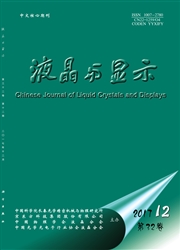

 中文摘要:
中文摘要:
根据液晶动力学理论研究了π型液晶盒中从展曲到弯曲的转变过程和转变所需的最小电压。在低电压驱动情况下,具有非对称预倾角度的展曲结构转变为非对称状态;在高于转变电压的脉冲作用下,再转变成为弯曲结构。结果表明,转变电压随着锚定强度的增加而增加,随着表面黏滞系数的增加而增加,随着预倾角度的增加而减小。使用本文提出的方法得到的转变时间比其他方法要快得多,可以小于50ms。
 英文摘要:
英文摘要:
Based on the dynamic theory of the liquid crystal, the process of the splay to bend transition of π cell and the minimum voltage (transition voltage) which can drive the cell to finish the transition were studied. For the cell with asymmetric pretilt, the initial splay configuration changes to asymmetric state driven by a low voltage, then to bend configuration driven by a pulse voltage which is larger than the transition voltage. It was shown that the transition voltage increases as anchoring strength or surface viscosity increase. By contrast, the transition voltage increases as the pretilt angle decreases. The transition time is less than 50 ms which is much faster than that of other methods.
 同期刊论文项目
同期刊论文项目
 同项目期刊论文
同项目期刊论文
 Computer simulation study of two-dimensional nematic lattice model based on modified Gruhn-Hess pair
Computer simulation study of two-dimensional nematic lattice model based on modified Gruhn-Hess pair 期刊信息
期刊信息
